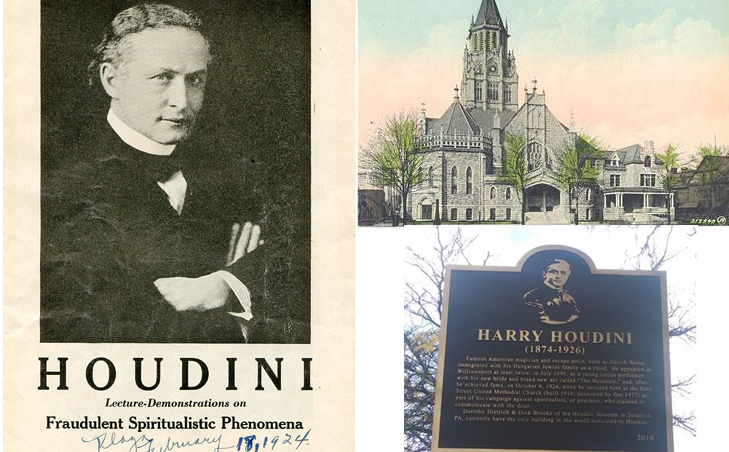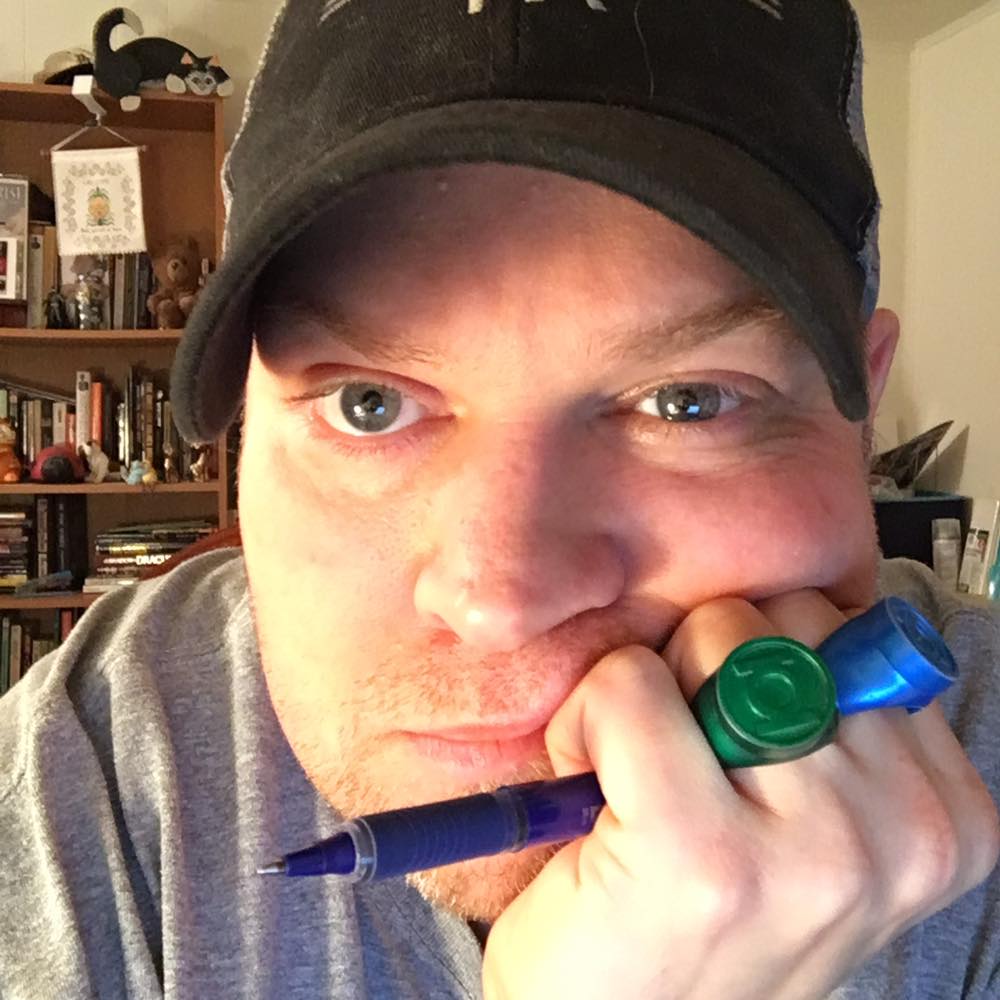
WILLIAMSPORT – It has been 95 years since famed magician and escape artist Harry Houdini died in 1926 on Halloween day. A couple of years before his death Houdini came to Williamsport.
At the time of his death, at age 52, Houdini had been touring the country in an effort to debunk many mediums and spiritualists as con artists.
Here in Williamsport, Houdini came to speak at the Pine Street United Methodist Church, which was across from the Old City Hall on Oct. 9, 1924, to discuss how he believed soothsayers and the like were able to bilk the gullible.
At the time, the Pine Street church was, according to a book dedicated to the 175th anniversary of the church found at the Thomas Taber Museum Library, about to seat in “all areas in full view of the pulpit” 2,500 persons.
In a listing published in The Grit on Oct. 5, 1924, Houdini was called “the famous exposer of fraudulent spiritualistic phenomena.” According to the listing, he would be on hand to provide a “splendid lecture and entertainment” and had been brought in by the Williamsport Ministerial Association.
Dorothy Dietrich, a modern escape artist and owner of the Houdini Museum in Scranton, believed that this Christian organization had a “good entertainment booker” to get Houdini here in Williamsport.
Former Williamsport Mayor Gabriel Campana, said in a telephone interview, that Williamsport “had a strong reputation as one of the stopping grounds” of Pennsylvania.
“Williamsport should be very proud of its history,” Campana said.
In its history, Williamsport had a group of people dedicated to spiritualism. Spiritualism was a belief that one could communicate not only with God, but with spirits and angels in the afterlife not just with prayer, but with spirit boards, automatic writing and possession by otherworldly beings.
Robert Damon Schneck, a writer known as America’s Historian of the Strange, explained the popularity of spiritualism, in a telephone interview. He said interest in spiritualism began in Hydesville, New York, with the Fox sisters.
“The sisters claimed that they could speak with spirits through a series of knocks on the walls, floorboards and table tops,” Schneck said.
The appeal of spiritualism was the “instanerous answers one could get from the other side as opposed to waiting for weeks or months for an answer from God,” Schneck said.
Schneck said another appeal was that “Women could be leaders in spiritualism, whereas in many protestant denominations of the time only men could teach and lead.”
However, because it could be faked and people were easily conned, this infuriated Houdini.
On March 12, 1924, Tennessean newspaper reported on Houdini’s visit to Nashville’s Ryman Auditorium on the same lecture tour.
(In) “all his 30 years of investigation, he said, he has never found an honest medium and he will give $3,000 to be convinced that the spirit of a man returns to earth from across the chasm of the grave.”
In his book “Miracle Mongers and Their Methods,” Houdini explained that “My business has given me an intimate knowledge of stage illusions, together with many years of experience among show people of all types. My familiarity with the former, and what I have learned of the psychology of the latter, has placed me at a certain advantage in uncovering the natural explanation of feats that to the ignorant have seemed supernatural.”
Dietrich said Houdini was the type of person who regularly helped other entertainers and other people in need.
“Houdini loved America and he signed up for the military, but they did not accept him. However, he took the time off from his normal shows and did shows and benefits for the American Red Cross. He would also travel the world and visit the gravesites of famous performers and if they were in need of repair, he would handle it. He really cared,” Dietrich said.
In the 95 years since he “crossed the chasm of the grave” both Dietrich and Campana honored Houdini for his 1924 visit with a marker back in 2016 at the modern Pine Street United Methodist Church (the previous structure had been destroyed in a fire in 1977).
The sign explained Houdini’s origins and his “campaign against spiritualists, or psychics, who claimed to communicate with the dead.”
Campana said there were discussions to bring Dietrich’s Houdini Museum from Scranton to Williamsport. Dietrich confirmed this. She said she and her partner Dick Brookz had talked about bringing the museum to Williamsport but it was ultimately unsuccessful. However, she is pleased to continue honoring Houdini today with her museum.
Another way Houdini’s legacy lives on is that it inspires other people into the realm of magic. Steven Hyde, of Montoursville, said it was Houdini who inspired him to become a magician.
“When I was just a little guy, I read some books on him, and then saw the Houdini film with Tony Curtis and it was a very big influence,” Hyde said. “I couldn’t get enough Houdini material and that’s why I dug into the history of the art.”
In the long run, Houdini said his goal was to entertain.
“Even if my readers (or members of the audience) are too well informed to be interested in my descriptions of the methods of the various performers (and fraudulent spiritualists) who have seemed to me worthy of attention … I hope they will find some amusement … of all manner of strange folk who once bewildered the wise men of their day. If I have accomplished that much, I shall feel amply repaid for my labor,” Houdini wrote in “Miracle Mongers.”
To find out more about Harry Houdini, visit the Houdini Museum at Houdini.Org.




